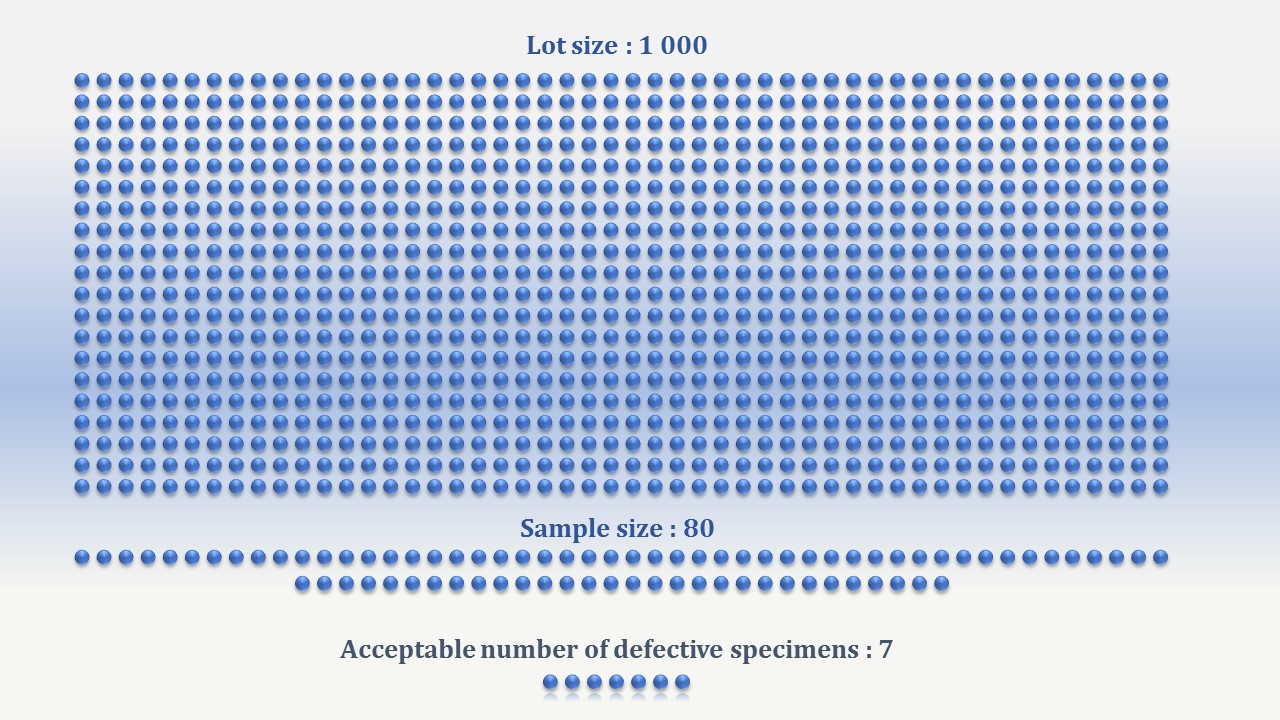What is the AQL 4.0% and the RQL 20% mentioned in the AAMI PB70-2012 specification?
A statistical approach has been developed to limit the producer’s risk (the highest defective rate considered acceptable in the process) and the consumer’s risk (the highest defective rate accepted by the customer). This statistical approach introduces two parameters of quality level: AQL and RQL
The AQL is defined as the Acceptance Quality Level expressed in % and the RQL is the Rejectable Quality Level also expressed in %. When those two parameters are part of a specification requirements, they imply that the tested finished goods must be submitted to a specific sampling plan which depends on three parameters :
- Lot size
- Inspection type (tightened; normal; reduced)
- Inspection level (I; II; III)
ANSI / AAMI PB70-2012 requires an AQL of 4.0% and an RQL of 20%.
For the AQL of 4.0%, the standard ISO 2859-1 can be used to calculate the number of individual samples for various lot sizes.
For this example, if the lot size is 1 000; 10 000 or 100 000 units, with a Normal inspection type and an inspection Level II, a look at Table 1 of the standard identifies the sample size code letters.
For these lot sizes, the sample size code letters are J, L and N, respectively for 1 000; 10 000 and 100 000 units.
If a single sampling plan is used, Table 2-A of the standard indicates the number of samples (the sample size) to be inspected for the production evaluation. For this example, the sample size is respectively 80, 200 and 315 items.
Finally, this Table 2-A also indicates the acceptable maximum number of defective specimens in the sampling plan to be compliant with an AQL 4.0%. For this example, the acceptable number of defective specimens is respectively 7; 14 and 21.

Figure 1 : Example of an AQL 4% test plan for a 1000 items lot size

If you have questions about this publication, please contact info@gcttg.com

